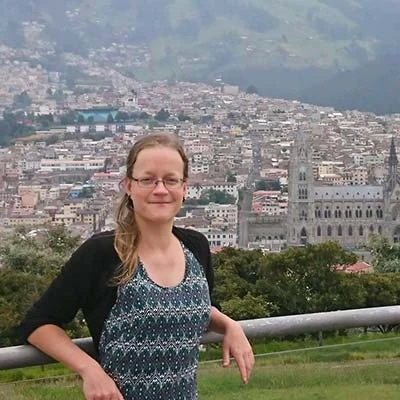
On October 9, 2020, the independence of the Ecuadorian port city of Guayaquil was celebrated 200 times. A good occasion to take a closer look at the jewel of the Pacific Ocean, as the city is called by the locals. The Ecuadorian newspaper El Comercio has dedicated a special issue to the anniversary of independence, and on one page* of it the former cityscape is compared with the present one very vividly in pictures.
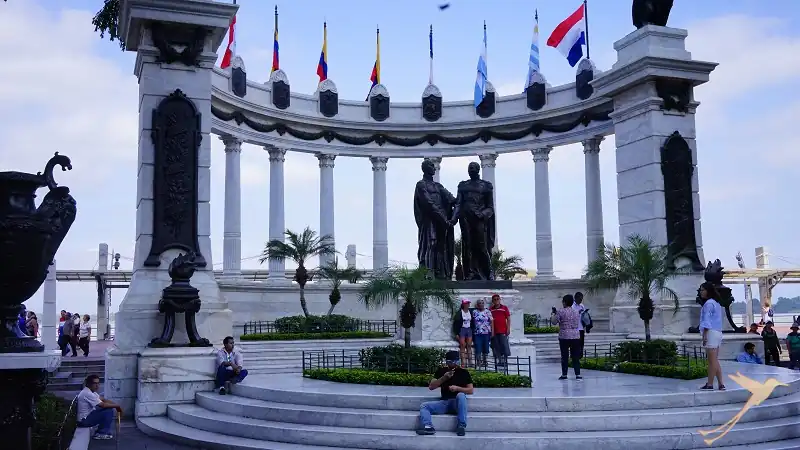
The way to the independence of Guayaquil
Towards the end of the 1700s, as in large parts of the American continent, Ecuador and revolutions against the colonial powers and the idea of independence took on ever clearer forms.
The Guayaquil-born journalist, soldier and politician José Antepara had lived in Europe for a while and made friends with great personalities who adhered to the idea of independence of the American peoples from the Spanish crown.
In 1814, he returned to Guayaquil and became friends with like-minded people like José de Villamil and José Joaquín de Olmedo.
Three soldiers from Venezuela who had been dismissed from the Batallón Numancia in Peru due to revolutionary activities were to be sent back to Venezuela. The ship that was to take them there had to make a stopover in Guayaquil for several weeks. The soldiers met with some leading forces who advocated the idea of liberating the province of Guayaquil from Spanish rule.
Villamil and Antepara organized a ball for October 1, 1820, which served as a cover for a conspiratorial meeting and to which numerous supporters of the revolution were invited, including José Olmedo and the three Venezuelan soldiers. That night, the revolutionaries planned raids on various Spanish military quarters.
At first, it proved difficult to find a revolutionary leader, as several comrades-in-arms rejected the post for various reasons. Eventually, Leon de Febres Cordero, one of the three Venezuelan military officers, took the lead. A few days of preparation and organization followed, and finally, with the help of tricks, the support of defected Spanish officers, who were in charge of entire squadrons, and strategic raids, it was possible to overthrow the rulers, and on the morning of October 9, 1820, Guayaquil achieved independence. Until today, October 9th is a national holiday in Ecuador.
Places to visit in Guayaquil
Although Guayaquil is usually only a stopover before or after a trip to Galapagos or last stop before the return flight, the city has some interesting sights and places worth visiting.
Simon Bolivar Boardwalk
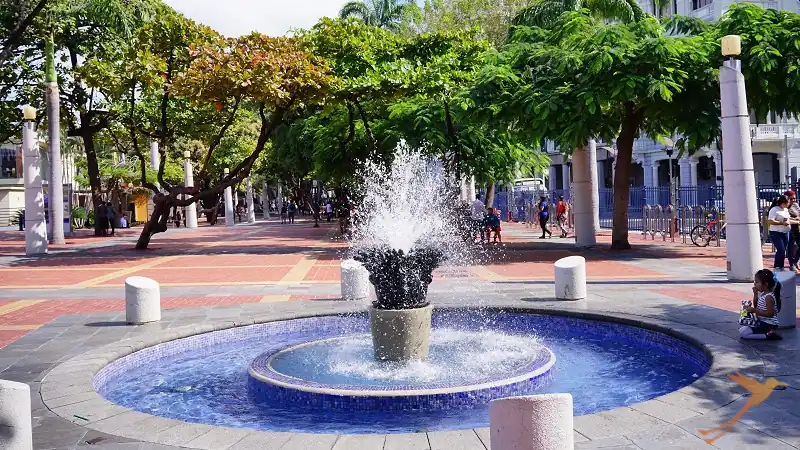
In fact, it has a lot to offer both city dwellers and visitors. Joggers can take an early morning run along the river, and the many green spaces offer opportunities for gymnastics and aerobics. Large old trees and numerous beautifully designed garden areas ensure a pleasant climate for strolling and walking even in the growing heat of the day.
The promenade leads the visitor along numerous monuments, memorials and art objects such as the monument of Simon Bolivar and San Martín and the Monument of water. There are many places to eat and drink – there are entire restaurant areas as well as a variety of stalls with snacks, drinks and ice cream.
Several air-conditioned shopping malls with boutiques, but also stores of the daily business, are located along the promenade.
Children are also well catered for as there are numerous playgrounds, a historic train car and all sorts of other attractions.
You can enjoy the view over the river to the island Santay, which is a nature reserve, and let the light breeze of the Guaya blow around your nose.

Guayarte
This artistic and gastronomic area at the end of the Parque Lineal on both banks of the Estero Salado was not opened until 2018. It offers a place for artists from different directions to exhibit and show their projects and works. Open-air concerts are held, there are huge graffiti and various sculptures to admire, and a separate room for theater performances is available. A zigzag bridge over the Estero Salado is also artistically designed.
Guayarte is especially interesting when it is dark because the light installations are real works of art. The mild nightly climate invites you to sit for a while with a cool drink at one of the extravagantly designed outdoor tables and watch the colorful hustle and bustle.
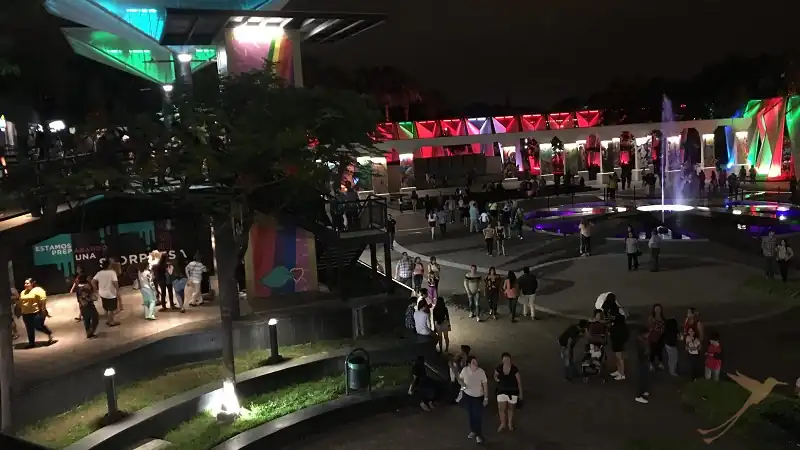
Besides the traditional Ecuadorian cuisine, there are also snacks and dishes from all over the world, and even vegetarians have enough choice.
Most of the buildings of the restaurants, bars, cafés and galleries are medium-sized shipping containers, some of them standing on top of each other – a very interesting construction.
Historical Park
The Historical Park, on the Samborondon Peninsula, which is located in the Guayas River, is a small world in itself. Among other things, the park combines a small game park, a piece of urban territory of the colonial Guayaquil, and is a recreation and leisure area for city dwellers and visitors.
The whole park covers an area of 8 hectares and is bordered on the western side by the river.
The circular trail leads first through the area of the game park. Here you will find species that are native to the area around Guayaquil, the majority of which are threatened with extinction. These were brought here in cooperation with the Ministry of Environment. In order to keep the habitat for the animals as original as possible, the paths in this area were built as wooden footbridges on pillars.

Then there is the zone of traditions. Here, you will get an insight into the rural life on the Ecuadorian coast in the 19th century. There is a restored farmhouse and a hacienda where sometimes small plays are performed. In the outside areas different crops like rubber, cocoa and tagua have been planted to demonstrate the work of the farmers.
In the urban-architectural zone, there are several originals, restored colonial buildings that were transported from their original location in the 1980s to ensure their preservation.
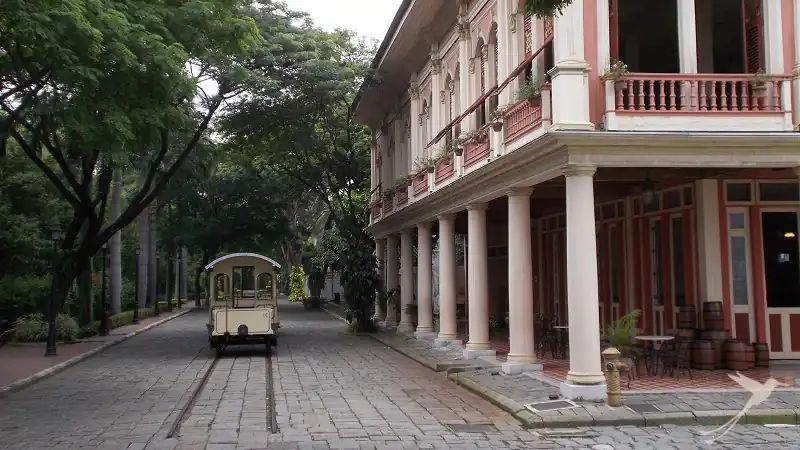
Ask us for individual tours in and around Guayaquil, because the surrounding area has a lot to offer like the mangrove area Manglares Churute, and it is also not far to several beautiful beach towns.







